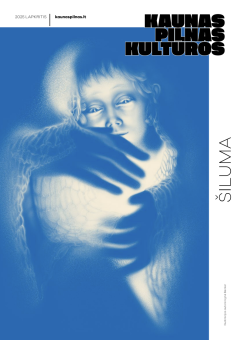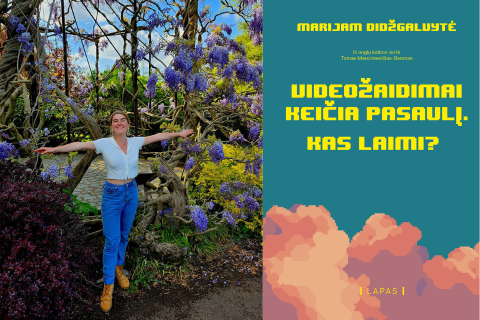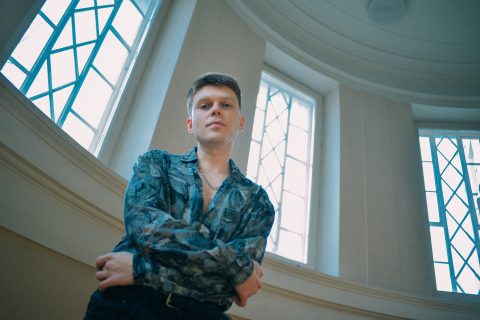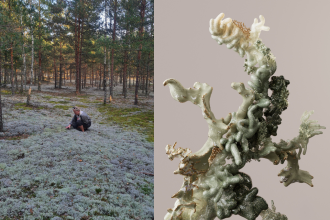One evening over coffee, we were chatting with painter Šarūnas Baltrukonis about the style of his paintings, which are undoubtedly influenced by video games, and in particular by the low poly aesthetic. As I listened to him, I realized that I belong to the last generation born before Google, whereas Šarūnas’s generation has grown up immersed in an ever-expanding digital world. The painter added that reality and virtuality are no longer separate entities; the world is understood by exploring both dimensions. However, as soon as we met, I started asking Šarūnas about things suspended between reality and virtuality – things that have vanished from city streets and now exist only in online archives. The artist managed to capture them in time, contributing to the preservation of collective memory.
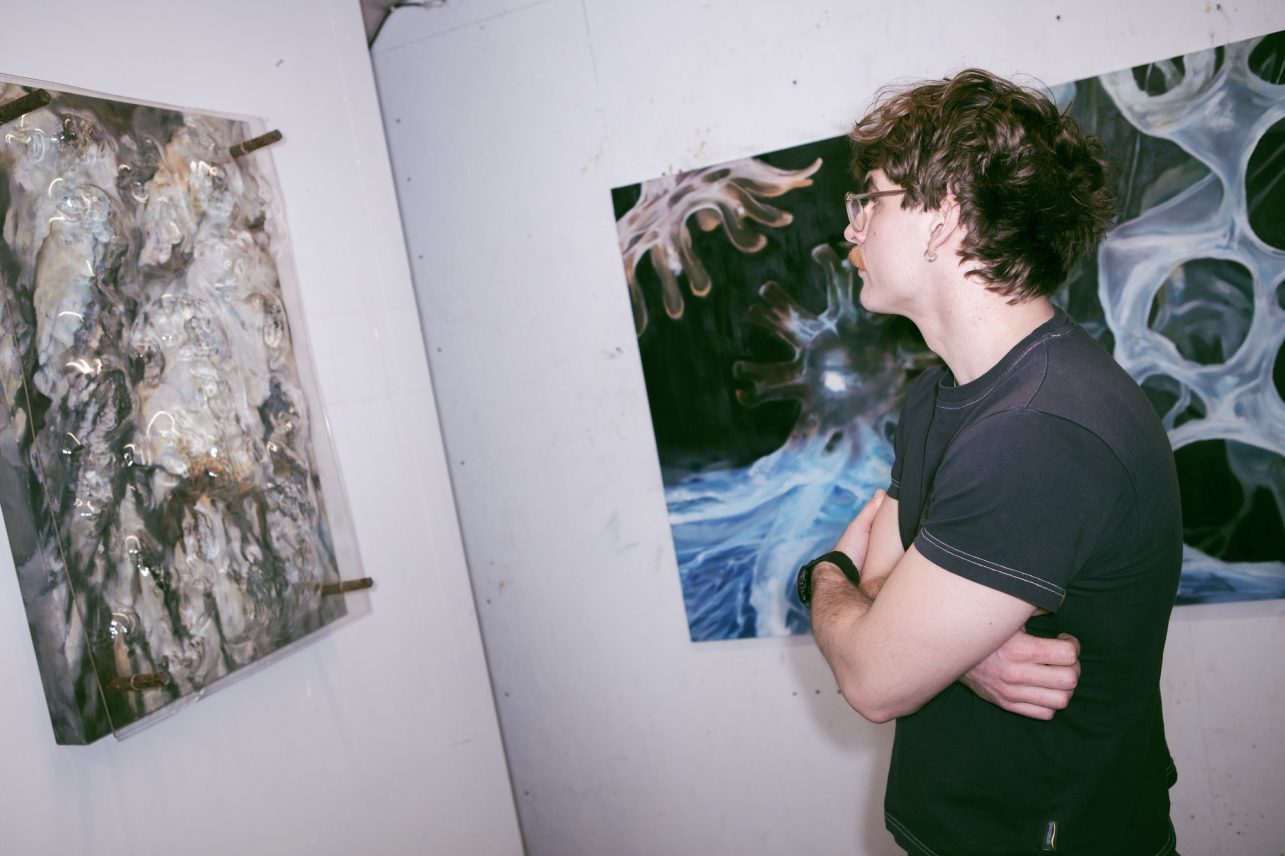
Kaunas newsstand, payphone, and a unit substation in Kleboniškis Forest. Why did you choose to create miniatures of these objects?
The idea was born during my studies when I was doing an assignment. At that time, I was actively involved in street culture, I was cycling around the city a lot and these objects naturally became the accents of Kaunas for me. I managed to take a picture of a payphone booth in Garliava, the last one, by the way, and it soon disappeared too. The newsstand was the first attempt at a miniature. I wanted not only to recreate the model of the kiosk but also to reflect the mark left by street culture on the object itself and the city of Kaunas. So, I spent a lot of time looking for visual material on the internet: graffiti, and tags, which make each kiosk individual, reflecting a specific place and time. These works are made of cardboard. Eventually, making them became a hobby. Now I don’t find the time to do it anymore, and the most interesting marks seem to have disappeared, and I don’t want to create the current kiosk model.
Maybe in 20 years, you will feel nostalgic about contemporary objects. But you mentioned your studies – you graduated from the Kaunas Faculty of Vilnius Academy of Arts with a degree in painting in 2021. Why did you choose painting?
From my early school years, I was always drawn to artistic subjects – they naturally became my extracurricular activities. In primary school, I studied ceramics and enjoyed sculpting, so I told my parents that I wanted to learn sculpture. They looked for places where I could study art. My first art lessons were at the Mykolas Žilinskas Art Gallery, where we would sketch the exhibits – the most memorable one was the Egyptian Hall. Later, I started attending the Antanas Martinaitis Art School. At the time, I didn’t take painting very seriously, but with encouragement from my teachers, I began to think about it more deeply. After finishing school, I decided to take preparatory courses at the Kaunas Faculty of the Vilnius Academy of Arts and enrolled in painting.
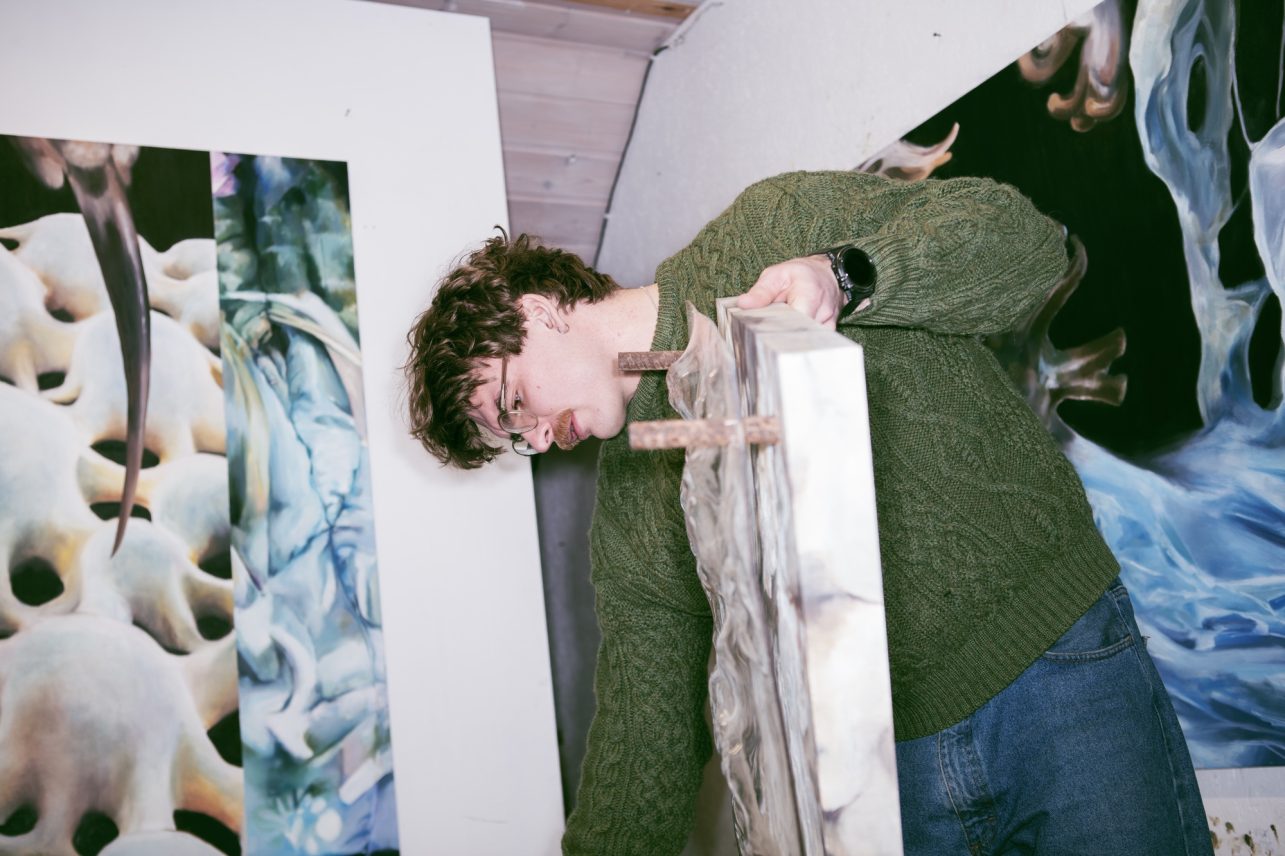

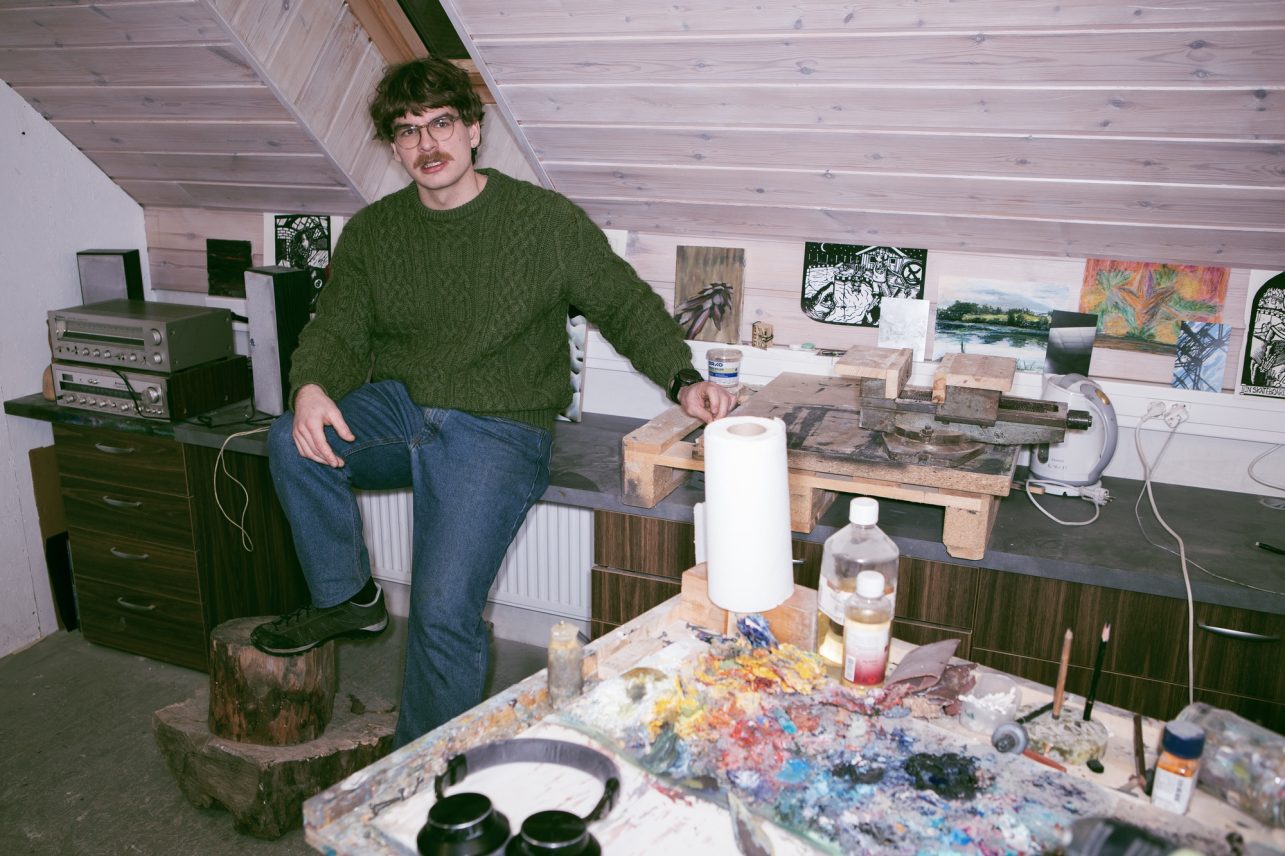
Do you have any plans to continue your studies?
Yes, it’s always fun to study, maybe I’d like to continue abroad.
The choice of study seems to have been very organic. Have you tried other media besides painting?
The academy makes a great effort to introduce you to various media as widely as possible. I liked painting the most, but as a medium it has its limits, so in order to reveal certain ideas more broadly, you need to use other tools, for example, an object from the general exhibition space. We often discuss with friends and colleagues how to expand painting, and how to go beyond the subframe. This task always seems to be relevant in creative work.
In your first solo exhibition Nexus, curated by Alberta Vengrytė at Drifts Gallery in the capital in 2023, you deformed several of your canvases, some of which were cut off, some of which were exhibited at unusual angles, and one painting was attached to the ceiling. Looking at the photos of the exhibition, it seemed to me that your paintings and their stories seem to extend beyond the usual painting, traveling the gallery walls and approaching the space of other paintings. So, it seems that you not only want to, but you are also directly leaving the sub-frame of the painting.
In my paintings, I try to merge digital and real spaces. This results in compositions that act as intermediaries, balancing between the real and the cybernetic. The non-standard format paintings you mentioned are part of a series that resemble fragments extracted from larger compositions. The smoothly blended, flat-painted surface mimics a digital texture, while the unconventional angles imitate the positioning of textures in the paintings. Extracting a motif – or in this case, a texture – from the painting provides new ways to experience it.
Your work shows a synthesis of reality and the digital world, but these worlds are abstract, and only certain elements are recognizable. You transport the viewer into a sort of in-between state.
I think this strongly resonates with my generation: how we grew up, how we perceive the world through a not entirely real lens. The cybernetic space has a profound influence on all of our worldviews. Growing up in a completely new environment, we have embraced its aesthetics. I create and paint in the way that seems closest to me, and when you live, exist, and grow in such a space, you naturally strive for a corresponding result. It seems that if I painted differently, the artwork wouldn’t feel impactful even to myself.
What seemed most relevant to talk about so far?
Life moments. There was one hall in the Nexus exhibition that the curator called archaeological: bones, teeth, and various finds became the main motifs. I find a bone of unknown origin in the backyard, a very interesting, painterly bone, and automatically its story continues on the canvas. As a result, it sometimes seems that the paintings come together very simply.
So, painting doesn’t become a creative struggle but rather a series of momentary discoveries.
Probably. In the end, everything comes together. I start to see the connections between different works and notice the emerging themes. Maybe it’s a process. Lately, I’ve been leaning towards exploring materiality, textures, and surfaces. For example, metal has a very rich surface; over time, it rusts, can be polished, and so on, depending on its environment. I’m looking for ways to translate that into painting.
Do you experiment a lot?
Not really, especially if we’re talking about total chaos. I experiment by changing the medium or how I approach the theme but not during the process of painting. It follows evenly, even though I try to do some things differently, for example, apply paint in a different way or change the sequence of actions. I’m a bit more conservative; I don’t turn my studio upside down while looking for new ways to create.
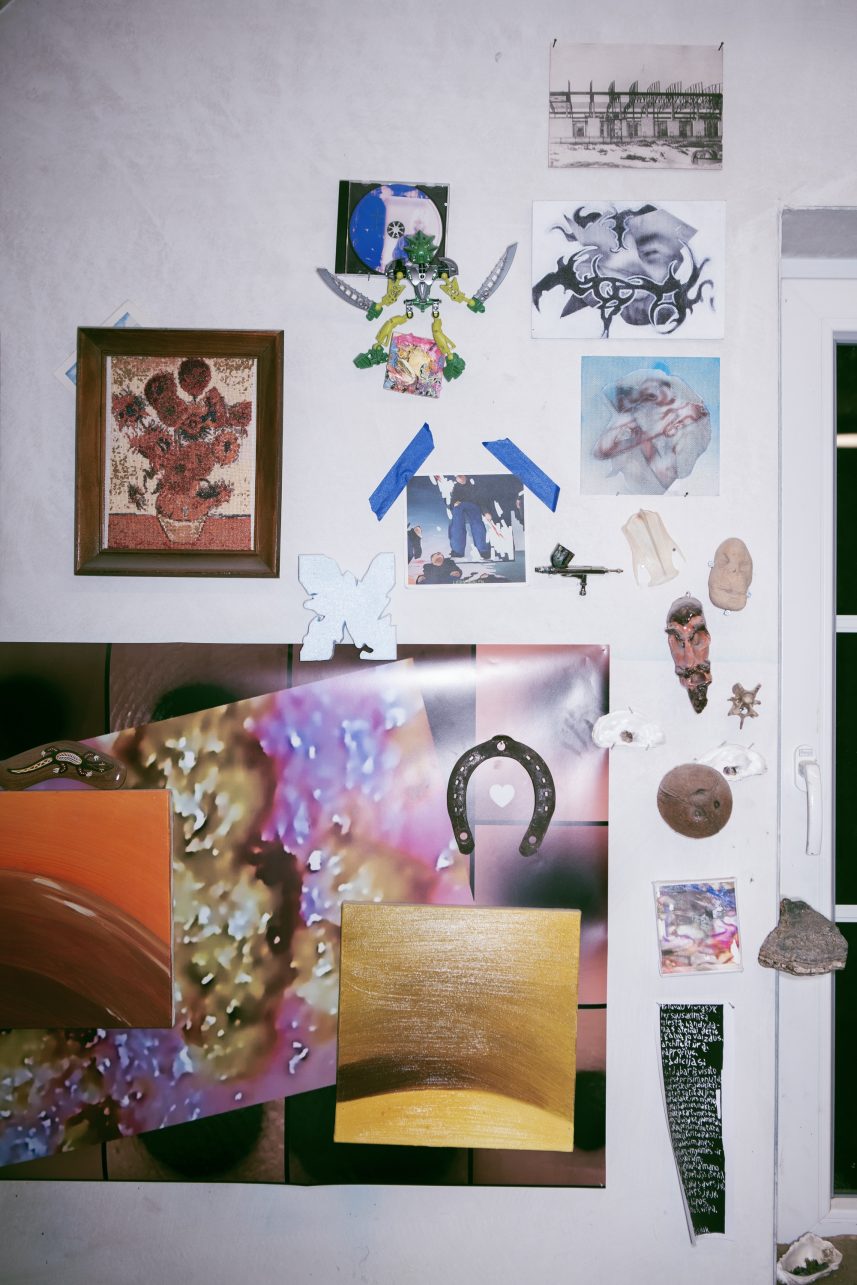
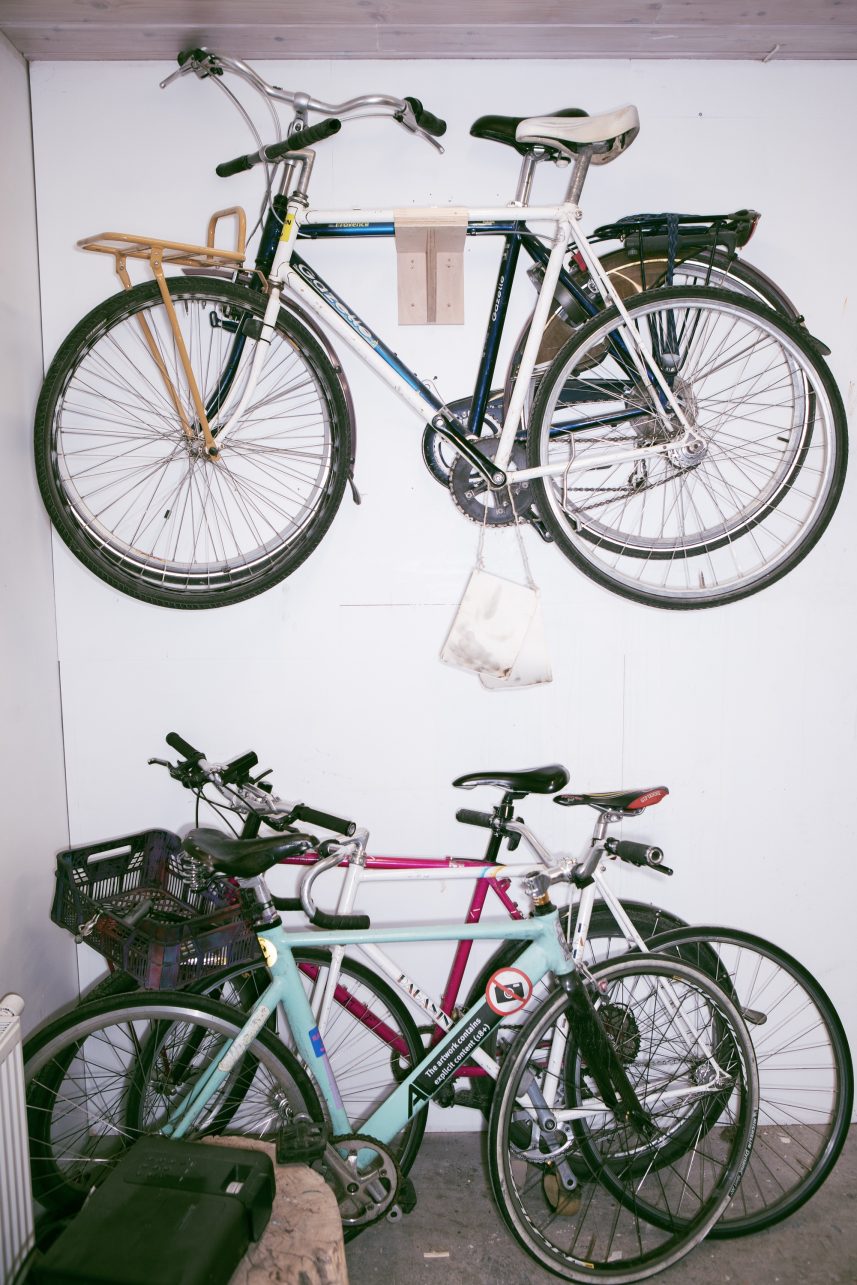
You are presented as a painter of the younger generation. Do you feel that this generation of artists has created a certain community?
The ideas and themes are different and personal, but there are people who think and see alike. We really support each other. In January we opened a group show Intermediate Glooms at Meno Parkas Gallery, so installing, preparing, being together, and then celebrating all the work in the bar is a very fun experience. It’s warm and fun to have someone to ask for advice, and to share it with. The best criticism comes from colleagues-friends who know me well and know which work is about me and which work is me trying to pretend to be something I am not.
Has your style changed much since the Martinaitis School?
During my studies, I didn’t worry about having a distinct style. It seemed more important to learn the craft. I always thought that once I mastered the basics, I’d be free to experiment because I’d have all the necessary tools. In the first years, I focused on technical execution, making sure colors and tones were chosen correctly – that’s how I evaluated the quality of a piece. After graduation, nobody comments on your work anymore, no one pushes you. You become independent and you start to observe your work more closely, looking for connections between your artworks. That’s when my style, my choice of motifs, and my attention to surfaces and textures became the most apparent.
Do you agree with the statement that the style of your paintings is reminiscent of the aesthetic of video games?
I think so. Although it is a rare pleasure now, I used to spend a lot of time playing games. I enjoyed strategy and shooting games, but the ones closest to my creative aesthetic are the early 3D games from the late ‘90s and 2000s. The angular low-poly aesthetic has had a big influence on me back when technology was limited, and developers had to create a convincing world within those constraints. It evokes nostalgia and authentically represents that era.
You have spent your whole life in Kaunas. However, you mentioned that you are thinking about studying abroad. How do you like creating and living here? Is there enough space in Kaunas to create?
I would like to see more cultural spaces, galleries, openings, and artistic activities. I’m a sedentary person, I’m glad that I grew up and live in the same city, I feel I’ve invested a lot here, I know all the corners and alleyways; I have driven around this city, lived, and explored it. It would be difficult to build all this again and tame another city, so I am not sure about studying abroad. Kaunas seems to be a very good-sized city, I can be more productive here, there is no unnecessary noise.
